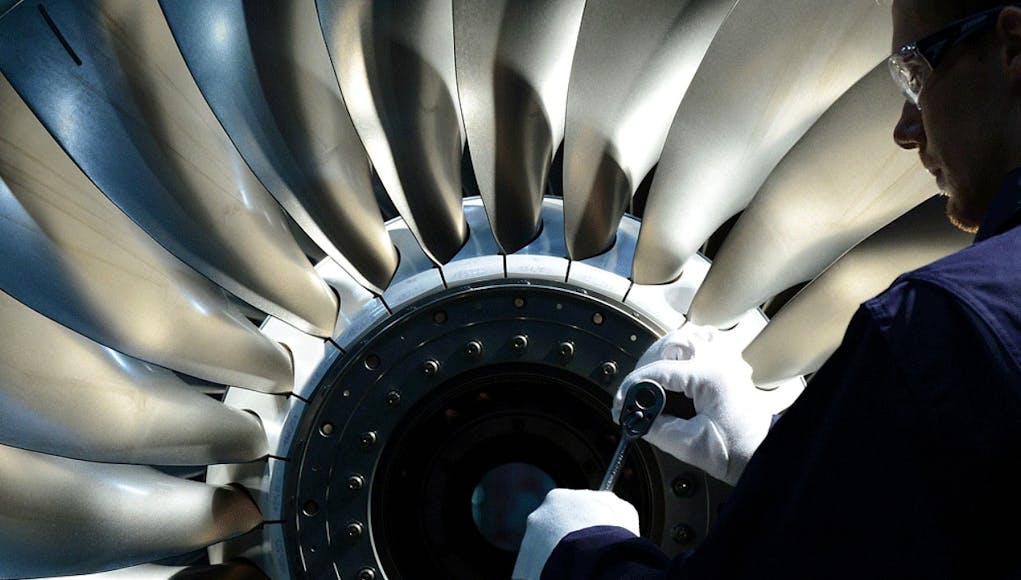Rolls-Royce has been awarded $1 million of research funding from the US Government for digital foreign object debris (FOD) detection technology.
The year-long research contract from the US Navy, will help to further develop Rolls-Royce’s ‘FanSense’ debris monitoring system, which is currently supporting the Pegasus engine.
“FanSense works by analysing the shaft speed signal of an engine and is able to detect any disruptions that arise as a result of a small object, such as stones or screws, striking an engine fan blade. The innovative technology applied as part of this service offering, will allow customers across Civil and Defence industries to detect much smaller debris entering the engine, enabling them to build a clearer picture of FOD damage and engine wear over time and will help to identify airfields that need to improve their FOD prevention practices.
The FanSense technology adds to Rolls-Royce’s portfolio of FOD prevention offerings, including the FOD App, the FOD cloud data analysis service and FOD officers. The vision for FOD technology is to build a digital system that is able to predict FOD events before they occur by analysing data collected from the app and using vehicle tracking sensors and debris tracking radars. FanSense adds a key missing piece to this system, determining the exact time and location of historic FOD events, which will enable customers to predict the conditions in which ingestion of a harmful object is likely to occur.”
Paul Craig, President of Defence Services, said:
“FanSense is an innovative and revolutionary Rolls-Royce digital technology being packaged and applied to our products. The research funding granted by the US Navy will allow us to further enhance and build upon our pioneering technologies that will enhance safety, efficiency and deliver a cultural change for our customers.”
Rolls-Royce say that FOD is estimated to cost the global aviation industry billions of dollars per year in damage and disruption. The vast majority of ingested debris currently goes undetected – only when very large items are ingested do operators have any indication that something has made its way into the engine.
Jonathan Sides, FOD Chief Engineer at NAVAIR said in a news release:
“Inlet debris monitoring technology is a critical element of the FOD mitigation portfolio, supporting the U.S. Navy’s initiative to save hundreds of millions in FOD repair costs.”














Slightly off topic, but some superstitious Chinese have this strange habit of throwing coins into the aircraft engine they are about to board for luck:
FIRST-TIME FLIER FINED £13,000 FOR THROWING COINS INTO PLANE ENGINE FOR GOOD LUCK
A first-time flier who threw coins into a plane engine for good luck has been ordered to pay £13,000 to a Chinese airline.
Twenty-eight-year-old Lu Chao threw the coins to wish for a safe journey as he was boarding a Lucky air flight in 2019 He admitted to tossing the coins when Lucky Air staff quizzed passengers after finding two one yuan coins on the ground near the left engine. The domestic flight was grounded due to safety concerns, and the 162 passengers were flown the next day following a full engine check. The budget carrier claims the flight cancellation cost in the region of 140,000 yuan (£16,000), and announced legal action would be taken against the passenger.
The US Army are paying for research into variable incidence turbine blades. At present the cold section of a turbojet/gas turbine can have variable incidence blades and stators, but not the hot section. The researchers believe there are massive gains to be had in “tuning” the hot section blades angles to the specific thrust requirement, i.e. take-off, emergency power as well as cruise. Theoretically, this makes sense as the blades angles are generally optimised to be most efficient in the cruise regime. They are hoping that this development will go into future helicopter engines.